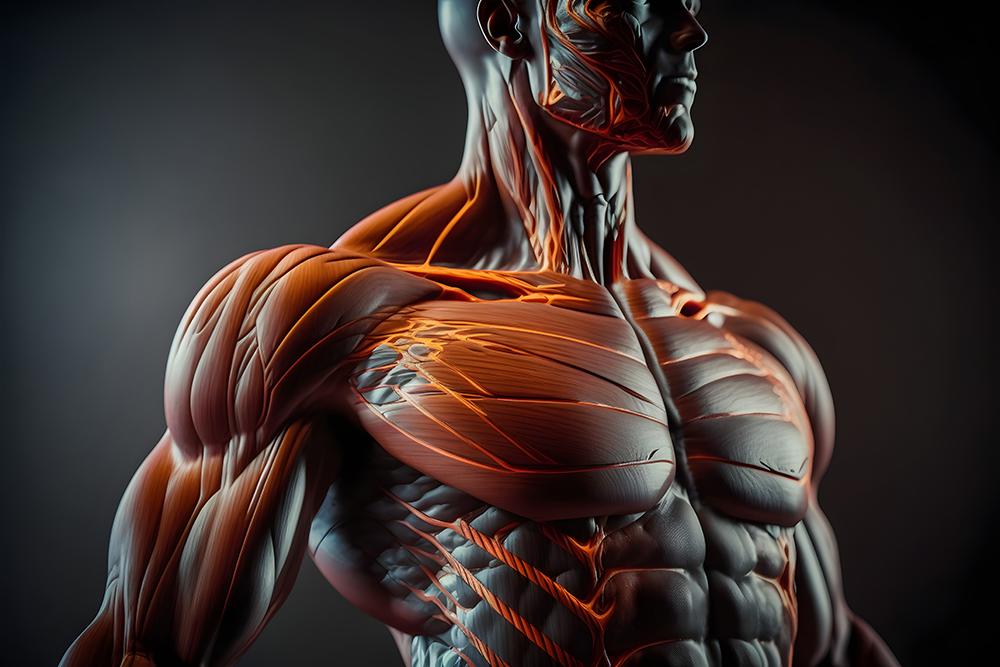A new 3D anatomy teaching model has been launched which will feature the most expansive skin tone library ever available in global health education. Health Business spoke to some of those involved in the project
Complete Anatomy 2023 has been launched by Elsevier and was developed after years of research and consultation with anthropologists, ancestral diversity experts, professors, students and 3D artists. The intention was to develop a broad spectrum of skin tones and facial features so students can learn from a model that more closely represents them and the patient populations they will serve, as well as address unconscious bias.
Previously, light-skinned bodies have dominated anatomy learning. A study in the Journal of Medical Education and Curricular Development in 2018 found that less than 5 per cent of images in general medical texts included dark skin tones.
A study in the American Journal of Public Health found that racial bias amongst healthcare workers can be linked to poorer patient outcomes for people of colour. One example of this is in skin cancer treatment, for which clinicians are required to look for melanomas on nails, hands and feet. These melanomas can appear differently on different skin tones. Therefore, if a clinician is not familiar with melanomas on different skin tones, this could lead to an inaccurate or delayed diagnosis.
Health Business spoke to Claire Smith, head of anatomy at Brighton and Sussex Medical School and deputy pro vice chancellor (Education and Innovation) at the University of Sussex, Julian Okorocha, year 2 medical student at Brighton and Sussex Medical School and Alan Delmar, product manager at 3D4Medical from Elsevier.
Inclusivity
We first asked why they wanted to get involved in this project. Claire said: “At Brighton and Sussex Medical School, we have for a number of years worked to make our curriculum more inclusive. We are currently undertaking research to understand what this means in anatomy, and how to develop best practice in educating future medical and allied healthcare practitioners. Complete Anatomy is one part of this for us. We had worked with Complete Anatomy with the release of the full female model. Before then, the anatomy we often see in textbooks and e-resources has been built on a male skeleton, but with, for example, breasts added on and hence was not true to the anatomy seen in clinical practice. This new release takes the theme of inclusivity further and now allows us to customize the model being used even more to reflect different skin tones and facial characteristics, in addition to being able to teach on a complete 3D female or male model.”
Research and creation
Conversation turned to how the model was created, with Alan explaining: “Firstly, it’s important to note that beyond the skin customization options, the core anatomy for male and the core anatomy for female stay the same. It was important that in addition to celebrating our differences, we also emphasise the fact that, ultimately, there is more to unite us than differentiate us. This means that, regardless of what visual characteristics the user applies on the model, they will have a consistent learning experience with their classmates.
“When it came to the design of the visual characteristics, our 3D artists had ongoing consultation with subject matter experts in the field of ancestral diversity over the course of two years. From speaking to the experts, it quickly became apparent that trying to represent specific population or ancestry groups through our models would fall into stereotype, and not represent of the true range of human diversity. Thus, we designed our customisation options with more of a mixed-ancestry approach, reflecting the individual beauty that exists in humans as a whole.”
Complete Anatomy 2023 comes after years of research and there were some challenges along the way, as Alan explains: “When it came to the design of our facial characteristics, a unique challenge faced by our 3D artists was representing the broadest possible range of human variation while also relating accurately to the underlying anatomy. This was achieved through painstaking testing and re-iteration of our new set of facial characteristics to ensure top anatomical accuracy.”
He said: “When our medical content team reviewed our existing 3D anatomy models, it became clear that they overly represented Northern-European phenotypes, since this is what the majority of existing anthropological material in this field is based on. Our team had to do some thorough investigation in order to find reference material showing a broader range of human diversity. Through this in-depth review, and along with the guidance of the subject matter experts we worked with, we made subtle changes to the male and female 3D models in order to make them more broadly representative, and less particular to one regional phenotype.”
App
Complete Anatomy is available as an app, which has more than 20 million downloads and more than 3.4 million active users. It is used at more than 500 institutions and clinical organizations globally.
Alan described how it works: “When the user opens the app for the first time, they will be asked to customize their model during the app setup. Firstly, they will select a set of facial characteristics; it was important for us that these are presented with no skin tone applied to resist stereotypical representations. Once a set of facial characteristics is selected, the user will then select a skin tone from a colour wheel. Again, a pre-selected state is avoided, until the user begins swiping through the wheel. Once they have chosen their skin tone, they click SAVE and they are now ready to learn anatomy on their customized model. It was important for us that we have no default option, so if the user skips the setup, a random set of visual characteristics are applied onto their model.”
Benefits
Complete Anatomy aims to fight racial bias amongst healthcare workers, which as previously mentioned can be linked to poorer outcomes for patients of colour.
One of the most important factors is the benefits it will bring to patient care and the health service in general. Claire said: “The key to ensuring our teaching is inclusive is to look at the populations of patients that the future medical and allied healthcare students will serve. As humans, we are each unique and it’s important to highlight both our similarities and our differences for students. This development within Complete Anatomy means that our teaching is not based on one white male, but represents many individuals from multiple backgrounds. This will therefore improve students’ readiness for diverse practice in the real world.”
Julian added: “The new Complete Anatomy model is a huge step forward in inclusion and diversity in our learning as students. It contributes to the fantastic work of addressing unconscious bias that has for a long time been ingrained within medicine. It is well documented how bias has negatively affected patient outcomes, especially for those who do not fit the stereotypical white and lean representation in the medical learning resources. As a major tool for anatomy learning, the new model normalises the inclusivity of different skin types and facial characteristics. This awareness plays an important role in training competent future doctors, especially when they later learn to recognise and diagnose conditions that might have varying differences in presentation based on skin tone. Overall, diversity in representation is critical for the provision of equitable healthcare for all patients.”
Complete Anatomy 2023 aims to address racial bias in healthcare, and provide a spectrum for students to learn from and therefore improve patient care and outcomes. Providing the most expansive skin tone library ever available in global health education, the cloud-based education platform is on the right track to achieving these aims.
Complete Anatomy 2023 is available in the Apple Appstore, Windows, and Google Play.





